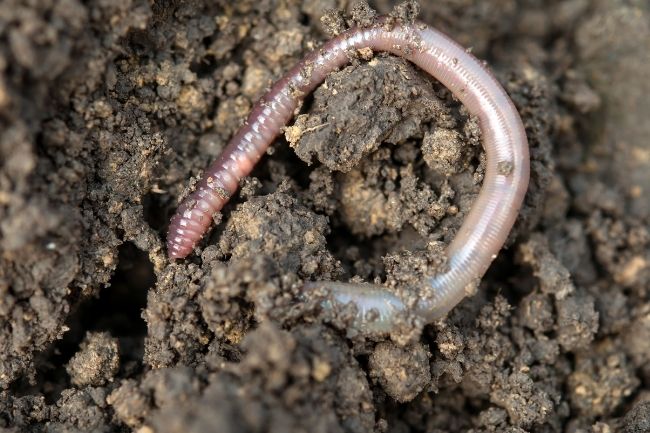Earthworm poop is called earthworm castings and looks similar to soil. It is rich in certain minerals and nutrients and is therefore sometimes used as fertiliser.
Contents
What is earthworm poop called?

Earthworm poo is usually referred to as worm castings, and they are most commonly noticed when sitting on the surface of the ground in a little pile. Sometimes worm castings that have been watered down are referred to as worm pee, but worms do not actually produce pee.
| Nutrient | Content in Earthworm Castings |
|---|---|
| Nitrogen (N) | High |
| Phosphorus (P) | Moderate |
| Potassium (K) | Moderate |
| Calcium (Ca) | High |
| Magnesium (Mg) | Moderate |
| Organic Matter | Abundant |
What does earthworm poop look like?
When we think about the poo of different animals, varying degrees of disgust tend to come to mind. The poo of dogs or cats might be the most unpleasant, whereas horse or sheep poo might be considered less revolting.
On this scale, we can perhaps think of earthworm poo as even less repulsive than sheep poo, as most of us would easily confuse it for mud or soil.
If you walk across a lawn early in the morning, you’ll often find little piles of lumpy soil. This mysterious stuff is in fact worm poo. If you look at it closely, you’ll see it’s usually brown, with a sandy, soil-like texture.
The reason that earthworm poo looks so soil-like is that there is usually a great deal of earth mixed in. After all, earthworms eat underground, without light and without any hands. This makes it practically impossible for them to separate out their food.
Earthworms eat a wide variety of organic debris. This includes leaves, dead roots, rotting food and faeces. They will happily munch down on most organic matter, so long as it’s not too tough for them to bite a chunk off.
How do earthworms pee and poo?

Earthworms do poop, having a similar digestive tract to our own. This means that food is taken into the body at the mouth and then travels through the gizzard and intestines in order for it to be broken down and useful nutrients to be extracted. Any remaining waste finally exits the body at the anus.
When it comes to earthworm pee, however, they technically do not urinate. Instead, excess water is filtered out by a small tube called a nephridium. These are found on most segments of the worm and release the excess water through the skin along with waste products such as ammonium.
The nephridium also helps to reabsorb anything that the worm does not want to get rid of. In a way, this is a very similar system to our kidneys, but the end result is perhaps more similar to sweating than urinating.
Why is it on the surface and not in the ground?
Worm castings are naturally most obvious to us when they sit on the surface of the soil. Below ground, even if we dug them up, they would just look like more soil to us.
Though piles of worm castings may seem to cover most of our lawns at times, it’s actually only a few species that deposit their waste on the surface like this. These species tend to be burrow forming worms, species that usually have vertical burrows that they live in for most of their lives.
For other worm species, it’s easier simply to leave their castings behind them as they forage on for more food.
Also read: Here’s “What do Earthworms Need to Survive?”
The benefits of earthworm castings
Many gardeners have a strong dislike of earthworm castings. This is because these piles of nutrient-rich mud can encourage moss and other weeds to establish in picture-perfect lawns.
However, castings have their benefits. This well digested organic matter makes a perfect fertiliser, and thrifty gardens will often collect it to add to potting compost or enrich beds.
| Benefit | Description |
|---|---|
| Nutrient-Rich Soil Amendment | Earthworm castings enrich the soil with essential nutrients for plant growth |
| Improved Soil Structure and Aeration | Castings improve soil structure, drainage, and allow for better root penetration |
| Increased Water Retention | The organic matter in castings helps the soil retain moisture, reducing water stress |
| Enhanced Plant Growth and Yield | The nutrients and beneficial microorganisms in castings promote healthier plant growth |
| Suppression of Plant Diseases and Pests | Castings contain beneficial microbes that help suppress certain plant diseases and pests |
| Environmentally Friendly and Sustainable | Earthworm castings are natural, renewable, and promote sustainable gardening practices |
Today, many people will even have wormeries, specifically so they can collect earthworm waste to use as an environmentally-friendly plant feed.
By digesting a range of organic matter, earthworms help to break down various nutrients and minerals already present within the food. Prior to being broken down, these useful ingredients weren’t available for plants to make use of.
In this way, earthworm poo makes the world a better place. Without earthworms, organic waste would take longer to break down, and there would be less food available to help our plants to grow. This would have a huge impact on our food production. Worms are therefore the mini gardeners that live within our soil.

